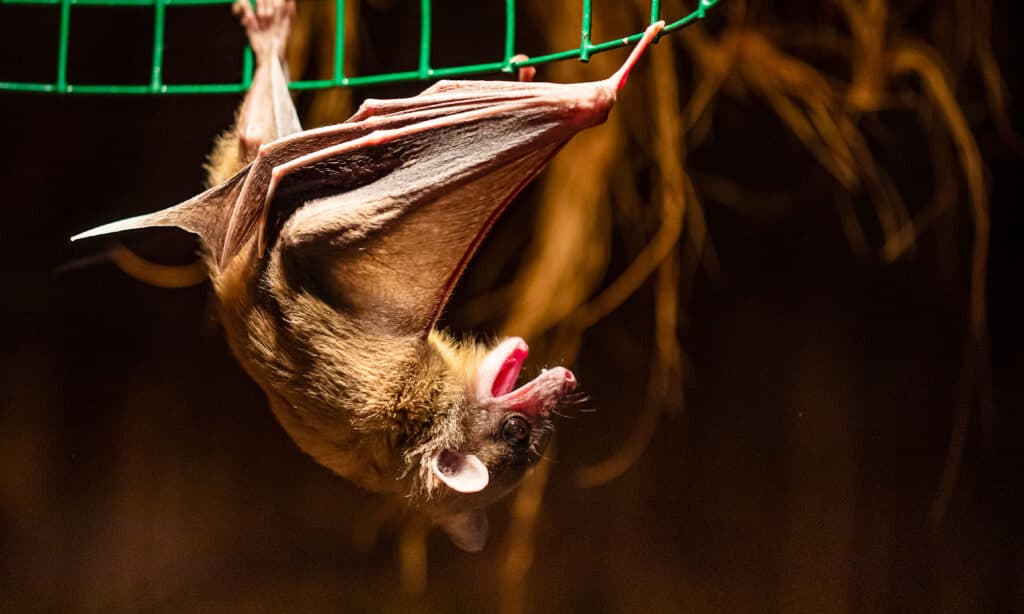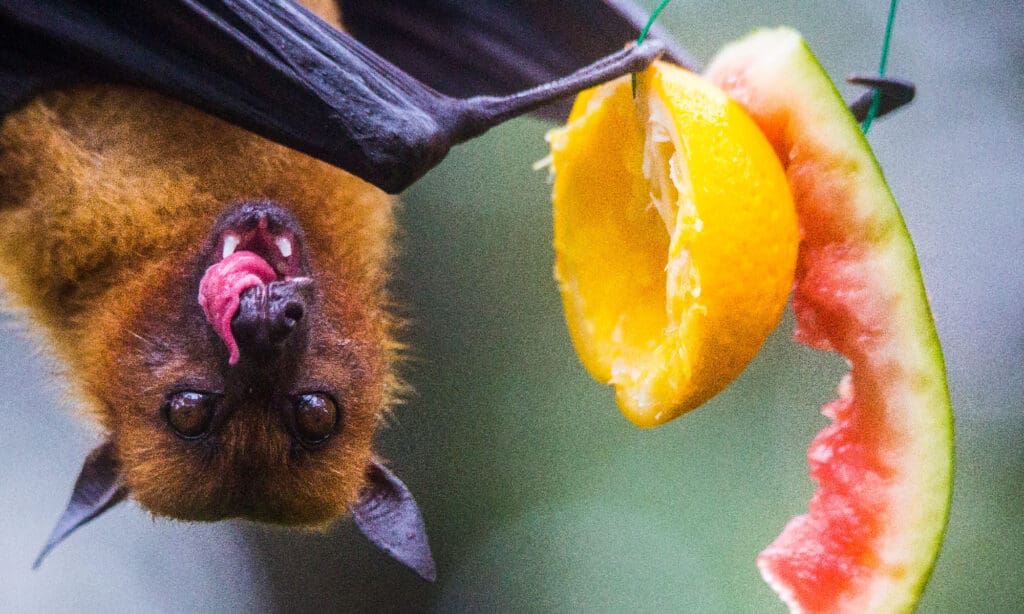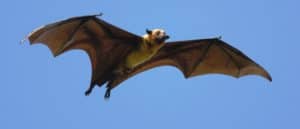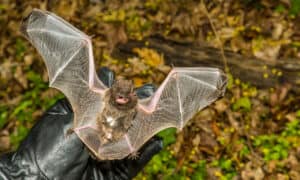Bats are flying mammals found in most parts of the world, except Antarctica, because these animals prefer warmer climates. They have a unique ability, unlike most mammals, to fly without ever gliding. Currently, there are over 1400 recognized bat species, and one of the most popular of the lot is the fruit bat. Although all species of fruit bats have various distinct features, the unifying one is they all feed on fruits or other kinds of flowering plants. These animals also spend most of their time foraging for a rich selection of fruits, pollen, and nectar.
Of all species of bats, fruit bats are the only ones that cannot use echolocation. To an extent, it is believed that this lack of echolocation in fruit bats is because of their size, seeing as they are the largest species of bats to exist. Although fruit bats share certain features with other species, there are still some differences, like their dentition. Keep reading to find out more about the teeth of fruit bats.
Do Newly Born Fruit Bats Have Teeth?

Fruit bats are born with milk teeth.
©Here/Shutterstock.com
Like other bats, the babies of fruit bats are called pups, and like most other mammals, female bats give birth to their young alive and feed them milk until they are strong enough to hunt their own food. As the mother is responsible for almost all parental care, the young pups may remain with her for the first four months or longer in some species, receiving both milk and protection.
The reason for this protection is that fruit bats are born without their teeth developed enough to bite into fruits and also without the use of their eyes. Like with most bat species, male megabats do not interfere with weaning. However, males of two different species have been discovered to produce milk.
How Many Teeth Do Fruit Bats Have?

Bats have anywhere from 20 to 38 teeth.
©Natalia Golovina/Shutterstock.com
As established, all bats do not have the same use for their teeth. Fruit bats use their teeth to open tough fruit shells. Generally, bats have anywhere from 20 to 38 teeth. Although different species of bats have varying numbers of teeth, they all still have anywhere from 20 to 38, and fruit bats are no different. Fruit bats have large, conspicuous fangs that take up a lot of room in their mouths. These bats frequently use their fangs as blades to crack open fruit shells and to tightly grasp prey. This wide grip is essential for bats to collect food because they routinely harvest and fly away with fruits larger than their heads. Bats who mostly eat fruits have more developed premolars and molars than other species that do not.
For bats that consume nectar and pollen from flowers, their dental anatomy is as long and tapered as their tongues. These bats have relatively small teeth, and compared to the size of their set of teeth, their tongues are relatively large. These nectar-eating bats have evolved to rely more on their tongue than their teeth for food. As such, their teeth are not used as much. Also, because they do not have to tear their food into smaller bits, their canines are incredibly tiny and barely noticeable.
How Do Fruit Bat Teeth Work?

Bats have a set of canines, incisors, and cheek teeth with molars and premolars that help them crush and grind their food.
©iStock.com/Four Oaks
Like other bats and mammals in general, fruit bats are heterodont. This means they have different types of teeth for different purposes. In order to help the bat crush and grind its food, it has a set of canines, incisors, and cheek teeth with molars and premolars. These teeth all function in their own unique ways. In all bats, regardless of their diet, the top and bottom teeth are made up of four different dental structures, including molars, which are used to grind food, as well as teeth for chewing and biting.
Contrary to popular opinion, eating fruit does not seem to put much pressure on the bat’s teeth which would cause them to change. The reason for this is that these fruit bats have undergone some alterations, one of the most notable being their nose/snout lengthening, permitting some dental arch development. Also, fruit-eating bats have developed front incisor alterations that may make it easier for them to consume some fruits face first. This development is similar to how vampire bats have modified their incisor teeth to make tiny surgical cuts into flesh.
Up Next:
Bat Teeth: Everything You Need to Know
Bat Predators: What Eats Bats?
The photo featured at the top of this post is © jekjob/Shutterstock.com
Sources
- Online Library, Available here: http://onlinelibrary.wiley.com/doi/10.1111/joa.12522/pdf
- Smithsonian, Available here: https://insider.si.edu/2011/02/for-chomping-insects-to-fruit-form-follows-function-in-bat-teeth/
Thank you for reading! Have some feedback for us? Contact the AZ Animals editorial team.






